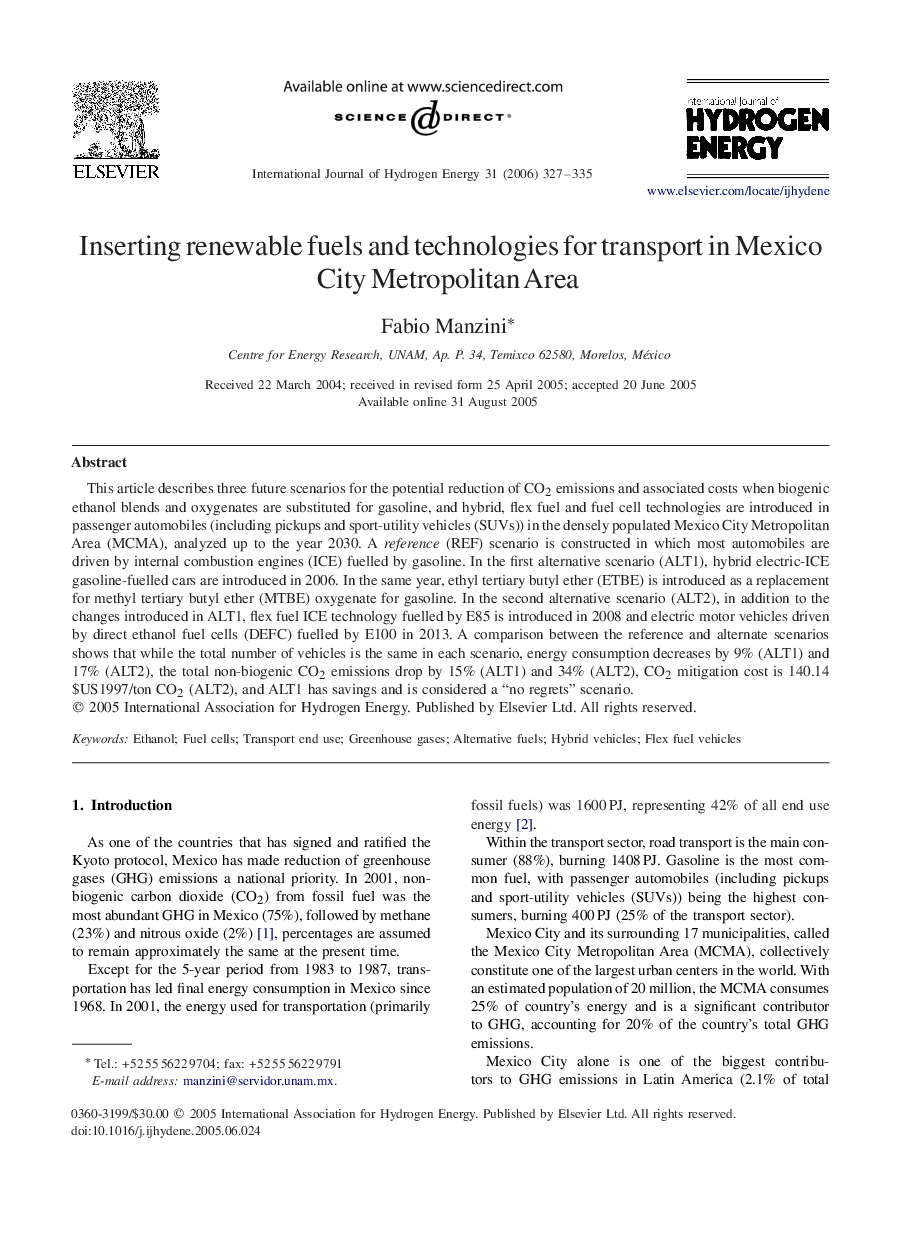| Article ID | Journal | Published Year | Pages | File Type |
|---|---|---|---|---|
| 1281221 | International Journal of Hydrogen Energy | 2006 | 9 Pages |
This article describes three future scenarios for the potential reduction of CO2 emissions and associated costs when biogenic ethanol blends and oxygenates are substituted for gasoline, and hybrid, flex fuel and fuel cell technologies are introduced in passenger automobiles (including pickups and sport-utility vehicles (SUVs)) in the densely populated Mexico City Metropolitan Area (MCMA), analyzed up to the year 2030. A reference (REF) scenario is constructed in which most automobiles are driven by internal combustion engines (ICE) fuelled by gasoline. In the first alternative scenario (ALT1), hybrid electric-ICE gasoline-fuelled cars are introduced in 2006. In the same year, ethyl tertiary butyl ether (ETBE) is introduced as a replacement for methyl tertiary butyl ether (MTBE) oxygenate for gasoline. In the second alternative scenario (ALT2), in addition to the changes introduced in ALT1, flex fuel ICE technology fuelled by E85 is introduced in 2008 and electric motor vehicles driven by direct ethanol fuel cells (DEFC) fuelled by E100 in 2013. A comparison between the reference and alternate scenarios shows that while the total number of vehicles is the same in each scenario, energy consumption decreases by 9% (ALT1) and 17% (ALT2), the total non-biogenic CO2 emissions drop by 15% (ALT1) and 34% (ALT2), CO2 mitigation cost is 140.14 $US1997/ton CO2 (ALT2), and ALT1 has savings and is considered a “no regrets” scenario.
